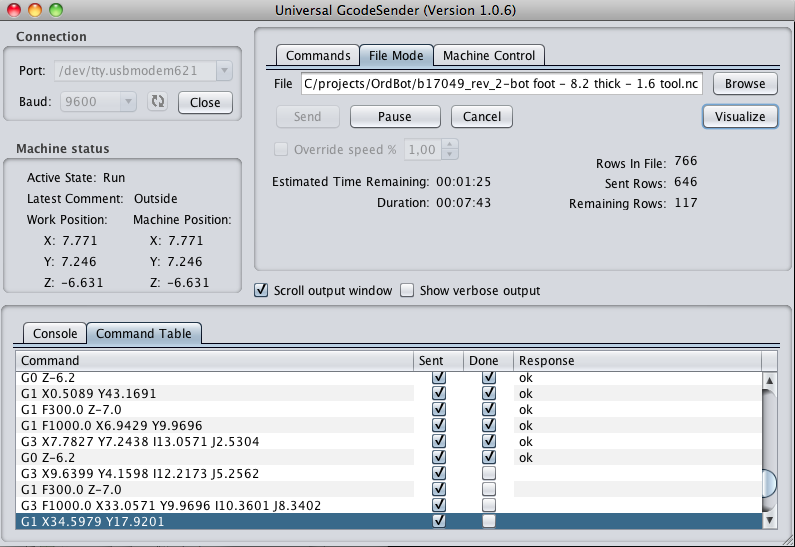-
-
Notifications
You must be signed in to change notification settings - Fork 763
Installing
Joacim Breiler edited this page Jan 25, 2023
·
38 revisions
- Download
UGS Platformfor Windows from here. - Unpack the
.zip-package - Start the program
bin/ugsplatform64.exe

- Download
UGS Platformfor Linux from here. - Unpack the
.tar.gz-package - Start the program
bin/ugsplatform

Use Raspberry Pi OS 32-bit, version Bullseye or later found here.
Note that Raspberry Pi OS 64-bit will not work.
- Download
UGS Platformfor Raspberry PI from here. - Unpack the
.tar.gz-package - Start the program
bin/ugsplatform
- Download
UGS Platformfor MacOSX from here. - Double click the
.dmg-file. - Drag the "Universal Gcode Platform" to your applications folder.
- Find the application in the Application folder and right click to open.
There might be a warning that the application is not signed which you need to ignore.


- Download and install Java 8 from here
- Download UGS Classic from here
- Unpack the zip package
- Run the start script
start.bat
- Download and install Java 8 from here:
- Download UGS Classic from here
- Unpack the zip package
- Run the start script
start.sh
- Make sure your system is up to date:
sudo apt-get update
sudo apt-get upgrade- Install Java:
apt-get update
apt-get install openjdk-8-jdk- Make sure your system is using Java 8 (1.8.xx):
java -versionjava version "1.8.0_65"
Java(TM) SE Runtime Environment (build 1.8.0_65-b17)
Java HotSpot(TM) Client VM (build 25.65-b01, mixed mode)
- Download UGS Classic from here
- Run the start script
start.sh